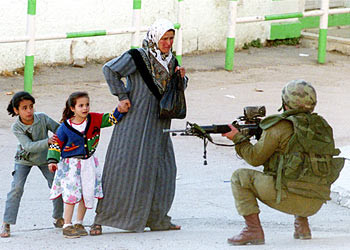Our Announcements
Sorry, but you are looking for something that isn't here.
Posted by admin in Pakistan-A Polaris of Earth on August 11th, 2015
 However, this resolve has practical value only if first this has been debated within the army and a formal decision on this score is taken, and secondly, all those who can be identified as having a vested interest in upsetting this apple cart, have been duly warned. This formal communication of intent is important because fools can all too often rush in where angels fear to tread, and PML-N is entirely capable of trusting stupidity for counsel. They have done this in the past, and will do so again.
However, this resolve has practical value only if first this has been debated within the army and a formal decision on this score is taken, and secondly, all those who can be identified as having a vested interest in upsetting this apple cart, have been duly warned. This formal communication of intent is important because fools can all too often rush in where angels fear to tread, and PML-N is entirely capable of trusting stupidity for counsel. They have done this in the past, and will do so again.Posted by admin in ISRAEL, ISRAEL'S MASSIVE NUCLEAR-Dangerous to Global Peace, Jews, Pakistan-A Polaris of Earth, Zionist Enemy, Zionist-Hindutva axis of evil on August 9th, 2015


Tariq A. Al Maeena is a Saudi socio-political commentator. He lives in Jeddah, Saudi Arabia.
Posted by admin in BEGHAIRAT ENEMIES OF DEEN on August 8th, 2015
This particular video which is part of the live Morning Show is by far the sickest thing that any of us has watched on television this Ramazan. First of all there was no reason at all to invite a person like Mathira to a Ramazan special Morning Show and if she was invited the host could have made sure that no controversial topics were discussed in the show in order to show respect to this month. Not only this, a Morning Show is a family show or a show which usually women watch. No one wants to see Mathira discussing her condom advertisement and all the other cheap stuff on the show.Letter to the Editor:
It is ironic that our female media persons come on TV dressed in shameless attire and then they think they are being good Muslimahs by uttering “Ma Sha ALLAH” and “In sha ALLAH”. Dupatta is carelessly worn on shoulder only OR not even there. Now don’t ask me why I look at them if I am so dejected by their getup because I am currently a writer having media and research background, so I have to turn on TV and study the news and reporting. The media policy is basically to be blamed and the organizers have no fear of hereafter. During Late General Zia’s tenure, the female newscasters and presenters on PTV were required to wear dupatta properly covering their heads. Everything has gone bizarre now and Qur’anic values are openly being violated. Islamic values are timeless – if the world is following Godless trends, we don’t have to pursue them necessarily. We should carve our own niche on the face of this world and be confident of Islam as the final religion !!
<
p style=”text-align: center;”>
Posted by admin in PAKISTAN :THRU VISITORS LENS, Pakistan Rising in Real Estate Growth, PAKISTAN SHINING on August 6th, 2015

Pakistan has the potential to be a global turnaround story. I recently spent time in-country listening to a wide range of perspectives and I am convinced that U.S. policymakers and business leaders need to look at Pakistan beyond the security lens. Getting our relationship right will require deeper thinking and action on issues around trade and investment, education, and broader economic development. The United States ought to be Pakistan’s preferred partner given its 70-year relationship. But in order to participate in the upside of the Pakistan story, the United States will need to view Pakistan not as a problem to be solved but as a potential partner. There are several changes that suggest the United States should soon act on this opportunity.
Pakistan Think Tank & its Members Thank Mr.Daniel Runde to See the Potential in the People & Nation of Pakistan
I cover the opportunities for the US coming from the developing world.full bio →
The Pakistan of today is similar to that of Colombia in the late 1990s. Back then, words like “drugs, gangs, and failed state” were freely associated with the Andean country. Today, Colombia has a free trade agreement with the United States, a stable 3.5 percent annual GDP growth, and security is vastly improved. Similarly, Western headlines on Pakistan today gloss over the progress on the security front, the increased political stability, and incremental progress on the economic front. In spite of this potential for Pakistan, it continues to suffer from a terrible country brand that has not caught up with realities on the ground.
Action Against the Taliban
Pakistan’s improving security dynamic is the first change to note. It is hard to understate the before-and-after effects of the Taliban’s horrendous December 2014 attack on a military-owned elementary school in Peshawar that killed 145 people, including 132 schoolchildren aged eight to eighteen. Almost immediately after the attack, the military responded in force by taking out 157 terrorists via air strikes and ground operations in the North Waziristan and Khyber tribal areas adjacent to Peshawar.
What has not sunk into international perceptions about the country is the tangible consensus among government, military, and Pakistani citizens against violent terrorists including the Pakistani Taliban and the alphabet soup of other terrorist groups in and around the country. Pakistan will continue to experience attacks by fringe groups, but policymakers and investors need to stop operating as if the Pakistani Taliban is at Islamabad’s doorstep.
Political Stability
Prime Minister Nawaz Sharif is governing with a competent cabinet, a majority coalition, and is working in tandem with the military to deliver peace and security. Sharif was elected in Pakistan’s transition of power between democratically elected governments in April 2013 and so far, he has demonstrated enough of a commitment to democracy.
For much of last year, Sharif exercised restraint against an active opposition that led a crippling 162-day sit-in in front of the National Assembly to contest the 2013 election results. Instead of opting for an aggressive approach, Sharif wisely deferred to an independent election mission to verify the results, which recently ruled in favor of his party. The military, at the request of the Prime Minister, encouraged the crowds to disperse peacefully. The military’s decision not to use force against protesters – or the sitting prime minister – suggests that Pakistan could be on its way to further consolidating its fragile democracy.
Better Luck Around the Corridor
Chinese investment is another reason why the United States should reassess its Pakistan calculus. Since Xi Jinping first announced the $46 billion China-Pakistan Economic Corridor (CPEC) in 2014, the project has quickly become the centerpiece of diplomatic relations between the two countries. CPEC will include highways, railways, and oil and gas pipelines – all constructed via Chinese companies.
The CPEC project aims to connect China and Pakistan, ending in Pakistan’s Gwadar Port on the Arabian Sea.
The CPEC project aims to connect China and Pakistan, with an outlet to Pakistan’s Gwadar Port on the Arabian Sea.
Even the possibility of the scheme’s partial achievement has injected optimism in a country starved for infrastructure and energy investment. The deal has also greatly incentivized the government to clamp down on terrorist groups. Economic success is by no means guaranteed especially given China’s checkered track record of investing in infrastructure projects abroad. Still, China’s bet on Pakistan could overshadow US contributions unless we rethink our mix of engagement.
Similar to its approach in Kazakhstan, China is interested in leveraging Pakistan – in the words of Dan Twining – as a “launching pad” for greater connectivity with energy producers in the Gulf and Middle East, as well as markets in the West. The good news is that Pakistani businesses still prefer the allure of technology transfer and innovation offered by U.S. companies. But make no mistake: for Pakistanis, Chinese investment is better than no investment.
Pakistan: The Next Colombia Success Story?
Continued from page 1
Comment Now Follow Comments
A New Development Story
Pakistan has a population of 182.1 million people and is the 6th largest country in the world. Sixty percent of the population is of working age. By 2050, Pakistan’s total population will be nearly 300 million, making it roughly ten times the size of Afghanistan. Pakistan is also among the world’s fastest urbanizing countries with half its people projected to live in cities by 2050. Twenty years ago, Islamabad, a planned city much like Brasilia, had a population of 400,000; today, it has a population of around 3 million including the peri-urban areas. Many Pakistani cities are undergoing a similar urbanization process, and this will create massive demands on food, energy, water, and consumer goods.
At the same time, macroeconomic and structural reforms over the last several governments have narrowed the budget deficit and raised GDP growth to a stable 4.5 percent despite large energy deficits, and built foreign reserves up to over $17 billion. Low oil prices and the $14 billion in annual remittances the country receives from its 6 million-strong diaspora have also helped. There has been substantial progress in reducing poverty, which has fallen to 13.6 percent in 2011 from 35 percent in 2002; in rural areas, poverty has dropped from 40 to 15 percent during the same period. While there is some debate on the accuracy of these numbers, there has been clear progress. In May, Standard and Poor upgraded Pakistan’s credit rating from stable to positive.
Pakistan is the world’s 26th largest economy in terms of purchasing power parity. Its national economic growth plan, Vision2025, aims much higher. With 90 percent of the country employed through SMEs, Pakistan has one of the most entrepreneurial economies in the world. Complete foreign equity is permitted in the infrastructure and manufacturing sectors, helping drive FDI to $1.45 billion in 2013, a 76 percent increase over the previous year but still far too small for such a big country.
Next Steps for International Engagement
As Pakistan gradually improves on a number of fronts, so should its relationship with the United States. Clearly, Pakistan wants more than just traditional foreign aid. During my visit, a prominent Pakistani intellectual and influencer told me that “if the United States isn’t going to build stuff, then it shouldn’t don’t bother.” Given the smaller budget envelope for U.S. infrastructure projects (the largest infrastructure project built by the United States in the last decade is the new U.S. embassy), assistance should be geared towards facilitating infrastructure investment particularly in the water and energy sectors.
Specifically, the United States should encourage regulatory and policy reform and encourage greater US investment using specialized agencies including Overseas Private Investment Corporation, the U.S. Trade Development Agency and USAID’s Development Credit Authority. Negotiations for a U.S.-Pakistan Bilateral Investment Treaty (BIT) have stalled due to reservations on both sides, but a successfully concluded BIT would be a strong signal of certainty and stability for US based investors interested in deeper engagement in Pakistan. This might be a good topic for discussion when Prime Minister Sharif visits DC in October.
A high level Pakistani official told me of their need for at least Pakistani 10,000 PhDs from the US in the near future. The United States should find more ways to increase educational opportunities for Pakistani students especially in critical areas such as urban planning, public administration, agriculture, and STEM.
Currently, the U.S. relationship with the country has been limited to a risk mitigation paradigm. However, the changes outlined above warrant a reframing of the way countries such as the United States engage with Pakistan’s government and especially its private sector. Pakistan is on a hopeful path and with the right mix of assistance and private investment, the United States can participate in Pakistan’s upside and remain a strategic partner.
This article previously stated that projections indicate Pakistan’s population will approach 300 million by 2025. It has been edited to indicate this will occur by 2050.
forbes.com
Pakistan: The Next Colombia Success Story?
Original URL:
http://www.forbes.com/sites/danielrunde/2015/08/03/pakistan-the-next-colombiasuccess-story/